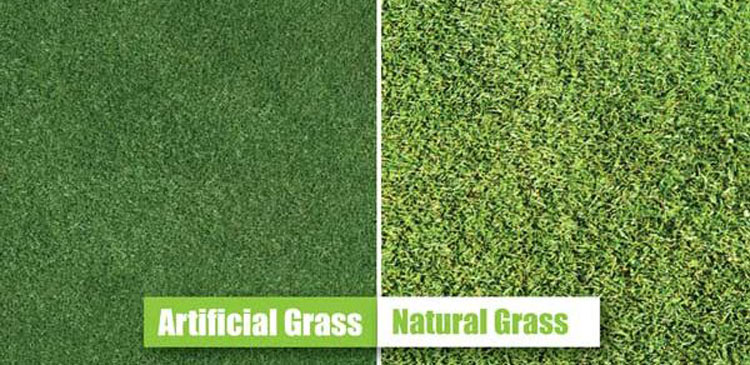When it comes to creating the perfect lawn, choosing between artificial grass and natural grass can be a tough decision. Your lawn is an essential part of your home’s outdoor appeal and functionality, so it’s important to select the right type that suits your needs, lifestyle, and the environment. Whether you’re considering synthetic grass installation in Sydney or prefer natural grass beauty, understanding the benefits and drawbacks of both options will help you make an informed choice.
The article compares artificial and natural grass, discussing their benefits, drawbacks, and key factors to help homeowners choose the best option for their lawns.
Understanding Artificial Grass
- What is Artificial Grass?
Artificial grass, also known as synthetic turf, is a man-made surface that replicates the appearance and texture of natural grass. It is crafted using synthetic fibres like polyethylene and polypropylene, and it is designed to stay green all year round without the need for watering, mowing, or fertilising.
- Types of Artificial Grass
There are several types of artificial grass available, each designed to meet different needs and preferences:
? Nylon: Extremely durable and able to withstand heavy foot traffic, making it ideal for high-use areas like sports fields and playgrounds.
? Polyethylene: Softer and more natural-looking, used in residential landscaping Sydney homeowners prefer for its realistic appearance.
? Polypropylene: The least expensive option, but also less durable and resilient, suitable for decorative purposes rather than high-traffic areas.
- Benefits of Artificial Grass
Artificial grass offers numerous advantages, which make it an attractive option for many homeowners:
? Low Maintenance: No need for mowing, watering, or fertilising, saving time and effort on residential garden maintenance.
? Durability: Stays green and lush year-round, even under heavy use, and withstands extreme weather conditions.
? Consistent Appearance: Remains aesthetically pleasing without the brown patches or weeds that can plague natural lawns.
- Drawbacks of Artificial Grass
While artificial grass offers convenience and durability, it does come with some drawbacks:
? Initial Installation Cost: Synthetic grass installation in Sydney can be expensive upfront, although long-term savings from reduced maintenance can offset this.
? Heat Retention: Artificial grass tends to retain heat, making it uncomfortable to walk on during hot summer days.
Understanding Natural Grass
- What is Natural Grass?
Natural grass is the traditional option for lawns and is composed of living grass species. It requires regular watering, mowing, and fertilising to maintain its appearance and health. Natural grass is preferred for its soft texture, cooling properties, and ability to support local ecosystems by providing habitats for insects and birds.
- Benefits of Natural Grass
Natural grass offers a range of environmental and aesthetic advantages:
? Natural Beauty: Provides a soft, lush, and natural look that enhances the overall appearance of your yard.
? Environmental Benefits: Helps in carbon sequestration, absorbs rainfall, and provides a natural habitat for wildlife.
- Drawbacks of Natural Grass
While natural grass has many appealing aspects, it also comes with its own set of challenges:
? High Maintenance: Requires regular watering, mowing, fertilising, and weeding, which can be time-consuming and costly.
? Allergens: Natural grass can trigger allergies due to the pollen it produces, making it less suitable for some households.
- Factors to Consider When Choosing Between Artificial and Natural Grass
1. Climate and Environment
The climate and environment in your area decide whether artificial or natural grass is the better option for your lawn. Synthetic grass installation in Sydney can be a good choice due to its water-saving benefits, while natural grass may struggle in hot, dry conditions without frequent irrigation.
2. Maintenance and Upkeep
Artificial grass requires a little upkeep beyond occasional cleaning, while natural grass demands constant attention, including mowing, watering, fertilising, and pest control. If you enjoy gardening and are willing to invest time in residential garden maintenance, natural grass might be more appealing.
3. Initial and Long-term Costs
Artificial grass installation in Sydney can have a high upfront cost, but it pays for itself in the long term through reduced maintenance expenses. Natural grass, while cheaper to install, requires ongoing expenses for water, fertilisers, and lawn care services like landscaping services in Sydney.
4. Usage and Traffic
If your yard is a high-traffic area where children and pets play, artificial grass may offer better durability and resilience. Natural grass, while softer and cooler, can wear down quickly in high-use areas and may require frequent repairs or reseeding.
5. Environmental Impact
Artificial grass conserves water and eliminates the need for harmful fertilisers and pesticides, but it is made from non-biodegradable materials and can contribute to plastic waste. Natural grass supports biodiversity and contributes to a cool environment but requires significant water resources and chemical treatments.
- Conclusion
For homeowners looking for a low-maintenance, durable option, synthetic grass installation in Sydney can be an excellent solution. If you value the natural beauty and environmental benefits of real grass and don’t mind regular maintenance, natural grass may be the perfect fit for your lawn. When deciding, consider factors like climate, upkeep, cost, and usage to ensure that your lawn remains a beautiful and functional part of your home for the coming years.

 Daniel
Daniel



